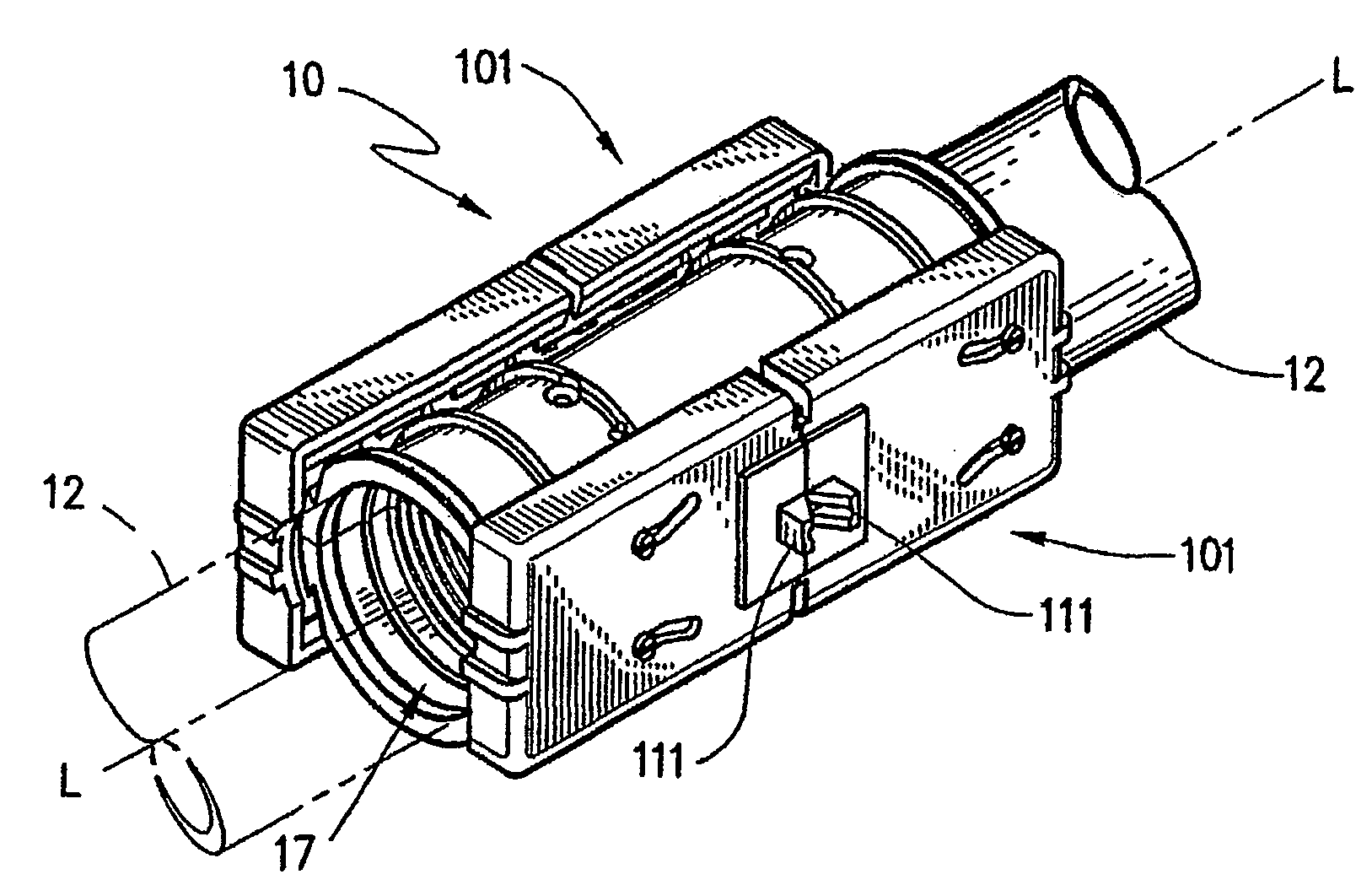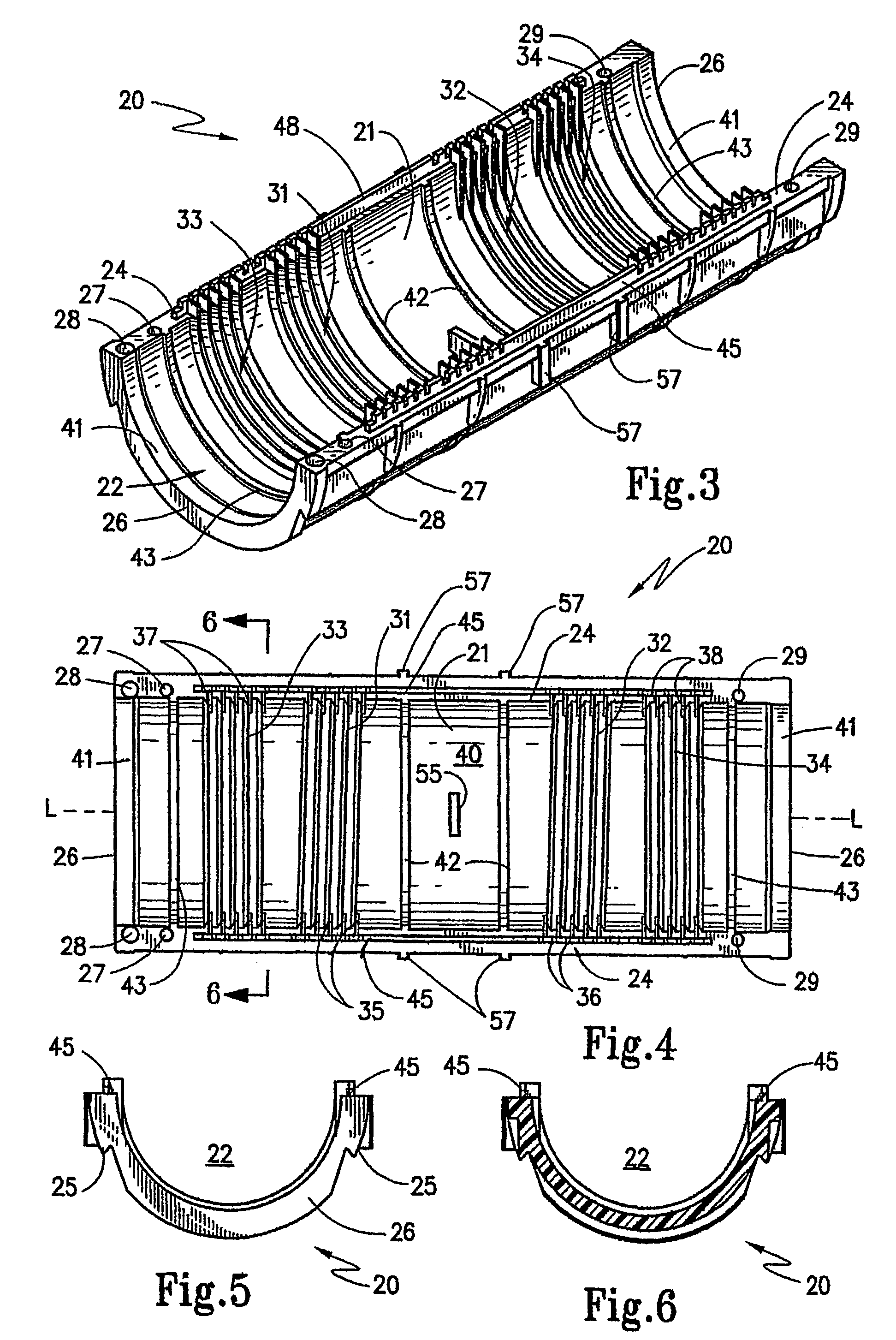Splicing Device and Method for Sealing Conduit Spaces
a splicing device and conduit technology, applied in the direction of pipe joints, fluid pressure sealed joints, sleeve/socket joints, etc., can solve the problems of reducing the likelihood of damage to these important utilities, and unfavorable installation and maintenan
- Summary
- Abstract
- Description
- Claims
- Application Information
AI Technical Summary
Benefits of technology
Problems solved by technology
Method used
Image
Examples
Embodiment Construction
[0052] The present invention is directed to a splicing device that is adapted to mount around a portion of conduit of pre-determined size and cross-sectional geometry. The splicing device is operative to seal a space in such conduit so that the conduit is isolated from external contaminates and, in addition, is substantially airtight. Normally, this space is defined by the junction interface of two separate pieces of conduit in a continuation conduit line. However, it should be understood that the splicing device of the present invention could also be used to seal around a rupture or a break in the conduit. Thus, for purposes of this invention, the term “space” includes the above-described situations and other gaps, ruptures or other spaces that might occur on a conduit line.
[0053] Accordingly, as is introduced in FIG. 1, splicing device 10 is shown mounted around a portion of conduit 12 that is a pre-determined size and cross-sectional geometry. In FIG. 1, conduit 12 is in the for...
PUM
 Login to View More
Login to View More Abstract
Description
Claims
Application Information
 Login to View More
Login to View More - R&D
- Intellectual Property
- Life Sciences
- Materials
- Tech Scout
- Unparalleled Data Quality
- Higher Quality Content
- 60% Fewer Hallucinations
Browse by: Latest US Patents, China's latest patents, Technical Efficacy Thesaurus, Application Domain, Technology Topic, Popular Technical Reports.
© 2025 PatSnap. All rights reserved.Legal|Privacy policy|Modern Slavery Act Transparency Statement|Sitemap|About US| Contact US: help@patsnap.com



